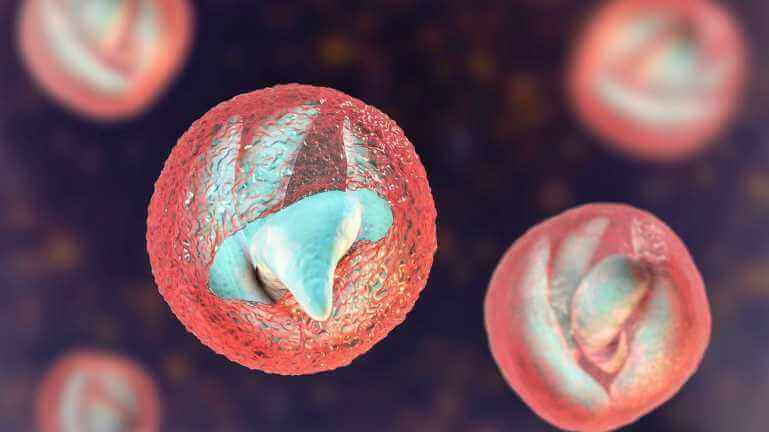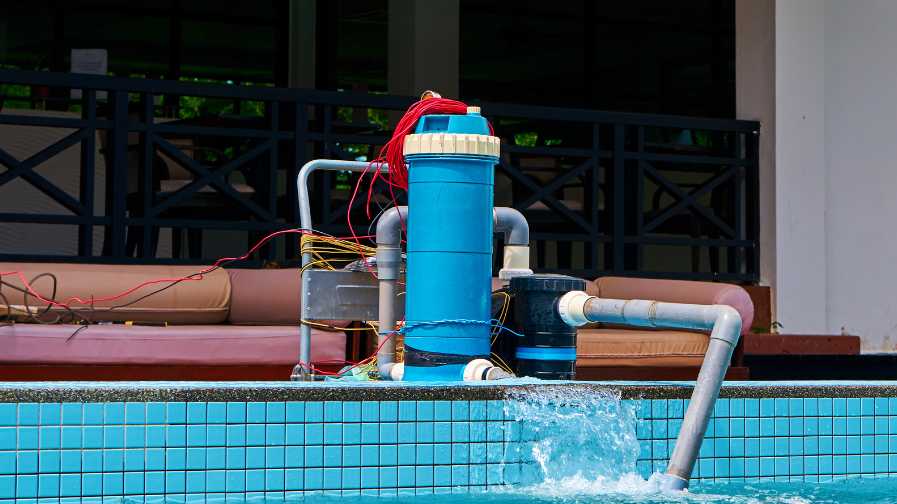A frequently posed query by many is: Can pool water be filtered for drinking? At first glance, pool water may seem clear and clean, but diving deeper into its composition reveals the importance of understanding water quality and safety. Before considering drinking pool water, even after filtration, it’s crucial to be aware of its inherent differences from standard drinking water.
Pool Water vs. Drinking Water
When comparing pool water and drinking water, it’s essential to recognize their distinct treatment processes and intended purposes.
| Category | Pool Water | Drinking Water |
|---|---|---|
| Chemicals | Contains chemicals such as chlorine, pH balancers, and algaecides to maintain water quality | Treated with chemicals such as chlorine, fluoride, and sometimes chloramine to kill bacteria and viruses |
| Taste | May have a distinct taste due to the chemicals used | Should have no taste or odor |
| Safety | Can be harmful if ingested in large quantities or if chemicals are not properly balanced | Generally safe to drink, but may contain contaminants depending on the source |
| Appearance | Can be cloudy or discolored if chemicals are not properly balanced | Should be clear and colorless |
| pH Level | Should be maintained between 7.2 and 7.8 for optimal effectiveness of chlorine | Should be between 6.5 and 8.5 for safe consumption |
| Alkalinity | Should be maintained between 80 and 120 ppm for optimal water balance | Not as critical for drinking water as it is for pool water |
| Hardness | Should be maintained between 200 and 400 ppm for optimal water balance | Not as critical for drinking water as it is for pool water |
Differences in Treatment and Purpose
Pool water is treated primarily to prevent algae growth and eliminate pathogens that can cause recreational water illnesses. Chlorine or bromine is commonly used as a disinfectant.
Drinking water, on the other hand, undergoes rigorous purification processes to remove contaminants and make it safe for consumption. The treatment focuses on eliminating harmful bacteria, viruses, and other pollutants.
Common Contaminants in Pool Water
Chlorine and Chloramines: While chlorine is effective in killing bacteria, its reaction with organic matter in the pool can form chloramines, which can be harmful when ingested.
Microorganisms: Despite chlorination, pools can still harbor certain pathogens like Cryptosporidium that are resistant to chlorine.
Chemicals: Sunscreens, lotions, and other personal care products introduced by swimmers can contaminate pool water.
Metals: Corrosion of pool equipment can introduce metals like copper and iron into the water.
While pool water may appear pristine, it’s formulated for swimming, not drinking. Even with filtration, the chemical composition and potential contaminants make it unsuitable for consumption without thorough purification.
This segment provides insights into the differences between pool water and drinking water, emphasizing the importance of understanding water quality before considering it for drinking.
Risks of Drinking Pool Water
While pool water may seem clear and inviting, drinking it poses several health risks. One of the primary concerns is the presence of Cryptosporidium, a microscopic parasite.
Introduction to Cryptosporidium

Cryptosporidium is notorious for causing waterborne diseases. What makes it particularly dangerous is its resistance to chlorine, the primary disinfectant used in pools. This means that even well-maintained pools can harbor this pathogen.
Other Potential Pathogens and Chemicals:
Beyond Cryptosporidium, pool water can contain other bacteria and viruses introduced by swimmers.
Chemicals, such as those from personal care products or runoff from nearby areas, can also contaminate pool water and pose health risks when ingested.
Water Quality in Pools
Maintaining optimal water quality in pools is not just about clarity but also about ensuring safety for swimmers.
- Maintaining water quality in a swimming pool is crucial for the health and safety of swimmers.
- The keys to maintaining water quality in a swimming pool include filtration, chlorination, pH level, total alkalinity (TA), and calcium hardness.
- Water temperature also plays a small role in water balance and must be considered when determining ideal water quality.
- Regular testing of pool water is essential to maintaining crystal clear and algae-free water.
- Public swimming facilities should adopt a multi-barrier approach to protect water quality, which means there should be two or more types of treatment in place to ensure water safety.
- The ANSI/APSP-11 2019 Standard provides recommended levels of chlorine and bromine for public pools and spas.
- Oxidation-reduction potential (ORP) is a more direct measure of water quality in swimming pools and spas than free chlorine.
Factors Affecting Pool Water Clarity and Quality
Environmental Debris: Leaves, dirt, and other debris can affect water clarity.
Chemical Balance: An imbalance in chemicals, like pH or chlorine levels, can impact water quality.
Swimmer Load: The number of swimmers and contaminants they introduce, such as lotions or bodily fluids, can affect water quality.
Importance of Regular Testing
Regularly testing pool water is crucial to ensure it’s safe for swimming. Tests can detect imbalances in chemical levels and the presence of harmful pathogens. By addressing these issues promptly, pool owners can maintain a safe and enjoyable swimming environment.
This segment delves into the risks associated with drinking pool water and underscores the importance of maintaining and regularly testing water quality in pools.
Emergency Disinfection of Drinking Water
In emergency situations where regular drinking water sources are compromised, it’s crucial to know how to disinfect water to make it safe for consumption.
Methods to Disinfect Water in Emergencies
Boiling: One of the most effective methods. Boiling water for at least one minute can kill most pathogens.
Chemical Disinfection: Using household bleach or water purification tablets can also disinfect water, but it’s essential to use the correct dosage and allow sufficient contact time.
Boiling and Filtering Cloudy Water:
If water is cloudy, it should first be filtered through a clean cloth or coffee filter to remove particulates. After filtering, the water should be boiled to ensure all pathogens are killed.
Modern Water Filters and Their Capabilities
With advancements in technology, modern water filters offer more than just basic filtration.
Overview of Alkaline-Water Machines and Filters:
Alkaline-water machines adjust the pH of water, typically making it more alkaline. Some believe alkaline water offers health benefits, though scientific evidence is still being studied.
Under-Sink Water Filters and Their Efficiency
Under-sink water filters are installed directly at a water source, providing filtered water on-demand. These filters can remove a wide range of contaminants, including chlorine, heavy metals, and certain pathogens. Their efficiency often surpasses that of pitcher filters, making them a popular choice for households seeking high-quality drinking water.
This segment provides insights into emergency water disinfection methods and offers an overview of modern water filters and their capabilities.
Testing Water Quality at Home
Ensuring the purity of your drinking water is paramount for health and safety. This is where the significance of testing water quality at home comes into play.
Importance of Testing Drinking Water Quality
Regular testing can detect contaminants, ensuring the water you consume is safe. It also helps in determining if your water filter is functioning correctly.
DIY Kits vs. Professional Testing
DIY kits are readily available and can detect common contaminants like chlorine, lead, and pH imbalances. They are user-friendly and provide quick results.
Professional testing, on the other hand, offers a more comprehensive analysis, identifying a broader range of contaminants with higher accuracy.
Addressing Common Contaminants
Water can contain various contaminants, each requiring specific treatment methods.
Dealing with Iron in Well Water
Iron can give water a metallic taste and stain fixtures. Water softeners or iron-specific filters can effectively remove iron from well water.
Filtering Out Hardness Minerals and Other Impurities
Hardness minerals, primarily calcium and magnesium, can cause scale buildup. Water softeners are the go-to solution for addressing water hardness.
For other impurities like chlorine, pesticides, and certain pathogens, activated carbon filters or reverse osmosis systems can be effective.
This segment provides insights into the importance of testing water quality at home and offers solutions for addressing common water contaminants.
FAQs
Can you safely drink pool water after filtering?
While filtering can remove many contaminants from pool water, it may not eliminate all harmful chemicals and pathogens. It’s generally not recommended to drink pool water, even after filtration.
What are the main concerns with pool water consumption?
Pool water contains chlorine and other chemicals to keep it clean. Additionally, it can harbor pathogens like Cryptosporidium that are resistant to chlorine. Consuming pool water can lead to gastrointestinal issues and other health concerns.
How can one ensure their pool water is of the highest quality?
Regular testing and maintenance are crucial. Ensure the chemical balance is right, and use quality filters. Also, encourage swimmers to shower before entering the pool to reduce the introduction of contaminants.
Final thought
Can You Filter Pool Water to Drink? is a critical question that highlights the importance of prioritizing health and safety in all decisions related to water consumption. While pool water may seem like a potential solution in specific situations, it’s crucial to recognize that the associated risks often outweigh the benefits. Therefore, it is imperative to remain informed and exercise caution, ensuring that the water we drink consistently meets the highest standards of purity and safety.

Mark is a seasoned Outdoor Equipment and Heating Appliances specialist. With a passion for adventure and a keen understanding of heating solutions, he brings expertise to the world of outdoor enthusiasts. Mark’s insights, gained through years of experience, make him a go-to resource for those seeking reliable guidance in navigating the realm of outdoor gear and heating technologies.

